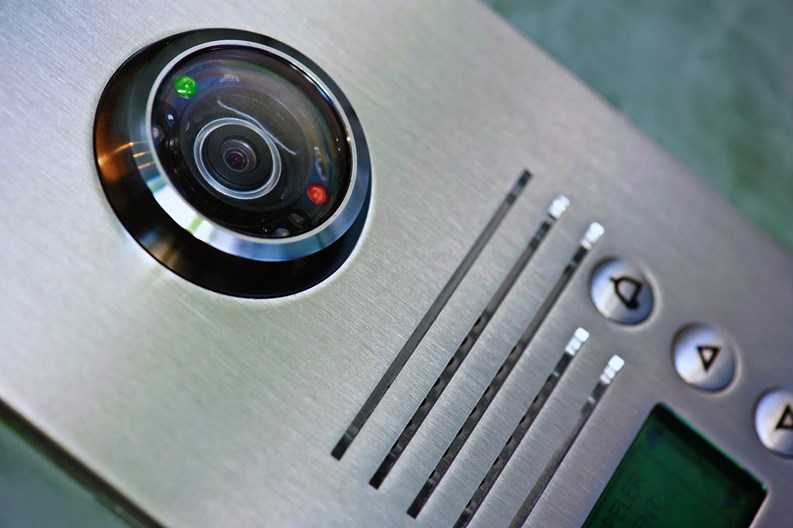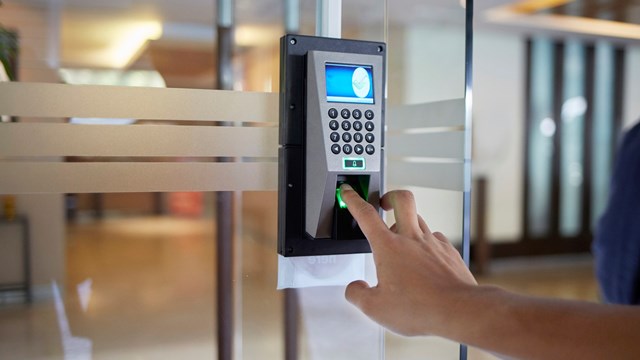The door intercom
system is the old standby of apartments, co-ops and condos—a thin
sheet of burnished metal bolted on the side of the building and
equipped with buttons that control who enters a building. There have
been entire stories and jokes written about misunderstandings caused
by static interference and faded labels on buttons. But those old
stories and jokes aren’t the reality of modern intercom systems
that are now incorporating more sophisticated technology.
Video Enters the Picture
Part of the upgrade to intercom systems is the use of video, which allows residents to see who is at the outer door before they're let into the building. Thus it would make it that much easier to keep out folks—such as canvassers or sales people—you may not want walking the halls of your building.
“There are some newer manufacturers that've come onto the intercom scene,” said Joe Cioffi III, vice president of Bergen Protective Systems in Englewood Cliffs, New Jersey. “They're providing a lot more with integrated video, so that's gotten better. Now we have cameras so people could not only speak via intercom but also see the image of the person.”
As Cioffi noted, a video system would require a different kind of cable to run than an older system. That means if an older building is looking to keep up with the Joneses, that could potentially drive up costs as new cable would need to be installed. Of course that would depend on the kind of cable already running through the walls.
Remote Control
But the advances don’t stop with video, as certain intercom systems are now able to link up with keyless entry, either through or a website or smartphone.
“Intercoms have become a lot more reliable, and the access features are expanded to include things like fingerprints and key fobs,” said Mike Brenner, director of business development at Advance Security & Intercoms in Yonkers, New York.
As many of these newer systems are web-based or mobile-accessible, it is important to see if they come with an inside station, which is an intercom unit inside each apartment for the unit owners to access. While operating via remote might sound tempting, a broken battery or lost phone could mean that no one’s able to contact the unit owner. It is important then to make sure there’s still an intercom station inside the unit that would protect against that and other eventualities.
“There’s a company out there that doesn’t offer inside stations and is only web-based,” said Cioffi. “I find that to be a downside. It’s a good idea to offer it, though. You can be running late on the way home from work or be on a beach in Hawaii—and be able to pick up your phone and use the intercom and either interact with them or let them up to your apartment. I don’t like having just remote without having something in house.”
Still, allowing visitor access through a smartphone adds an element of immediacy to what used to be a quick run over to the intercom terminal in your apartment. Most people carry their phones around with them, so this means friends won't get stuck in the rain waiting to get into the building while you’re in the laundry room folding clothes. While you may not want a mobile-only system, there are a lot of benefits to having the option along with the standard system.
“We see that typically on a new install or on a smaller scale,” said Cioffi. “We don't really see it in the larger apartment buildings, but basically there are some newer systems available where again among the features they may have apps. So you can go onto your smartphone using the app, then actually remotely vet somebody and then let them in.”
Sign of the Times?
Compared to the older systems, the newer ones provide a plethora of options and advances that could make the lives of unit owners a lot easier. They also feature integration with other systems, including burglar alarms, which can be integrated into pretty much every other system in the apartment.
“We can also control things like door locks through the system, turning lights on and off, integrated HVAC,” said Cioffi. “All the stuff is available, you can have your security system that's also controlling all these other different things.”
“Everything is web or browser-based today,” said Brenner. “From access control to closed circuit TV, virtually all forms of security are via the web and browsers. The systems are becoming more and more integrated. Today if I’m sitting at my computer, I can look at cameras elsewhere or at access control programs.”
These technological advancements appear to not only allow for remote access but for ease of access—meaning the days of running over to your door to let someone in and not being able to understand what’s coming in over the intercom could become a thing of the past.
John Zurz is a staff writer at The Cooperator.







Comments
Leave a Comment